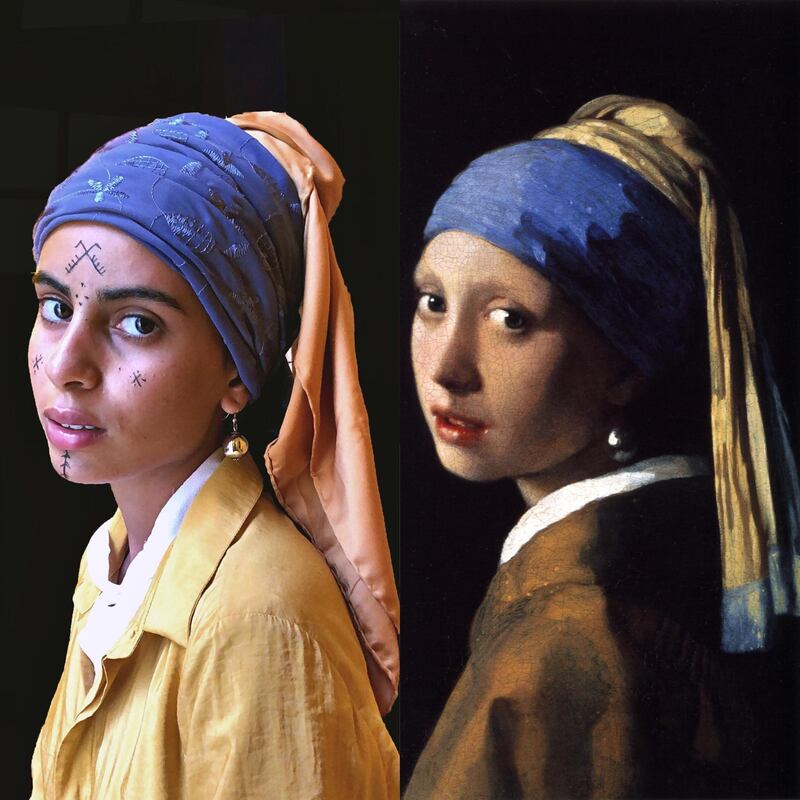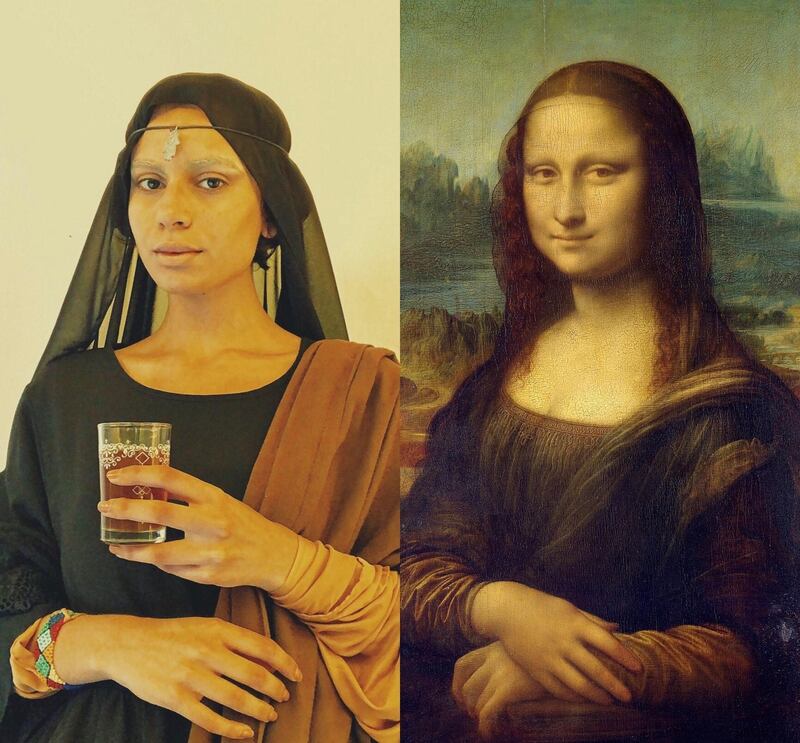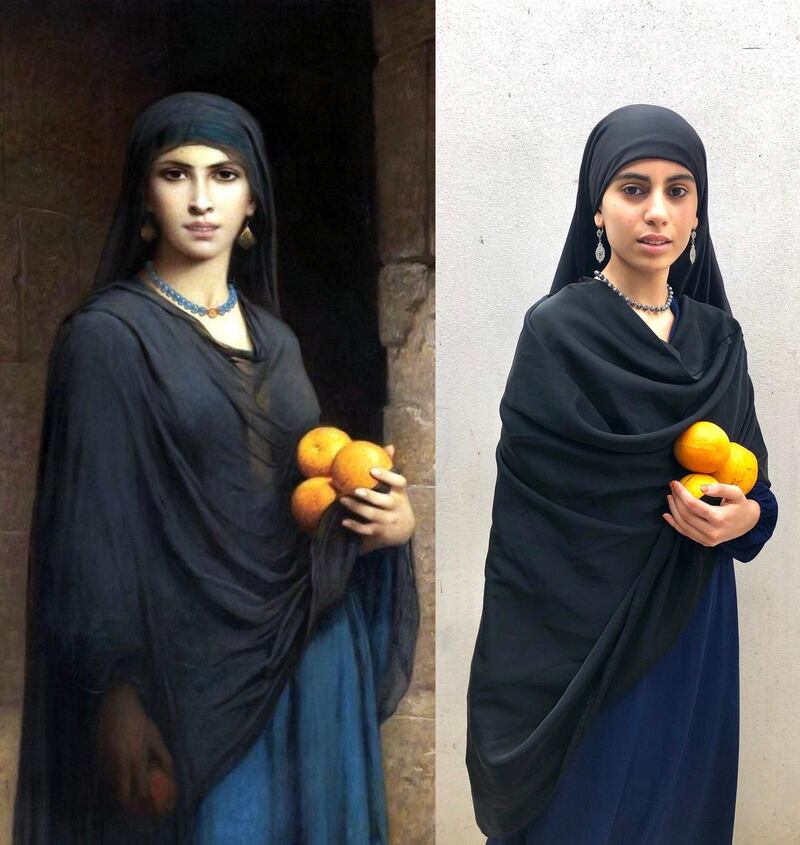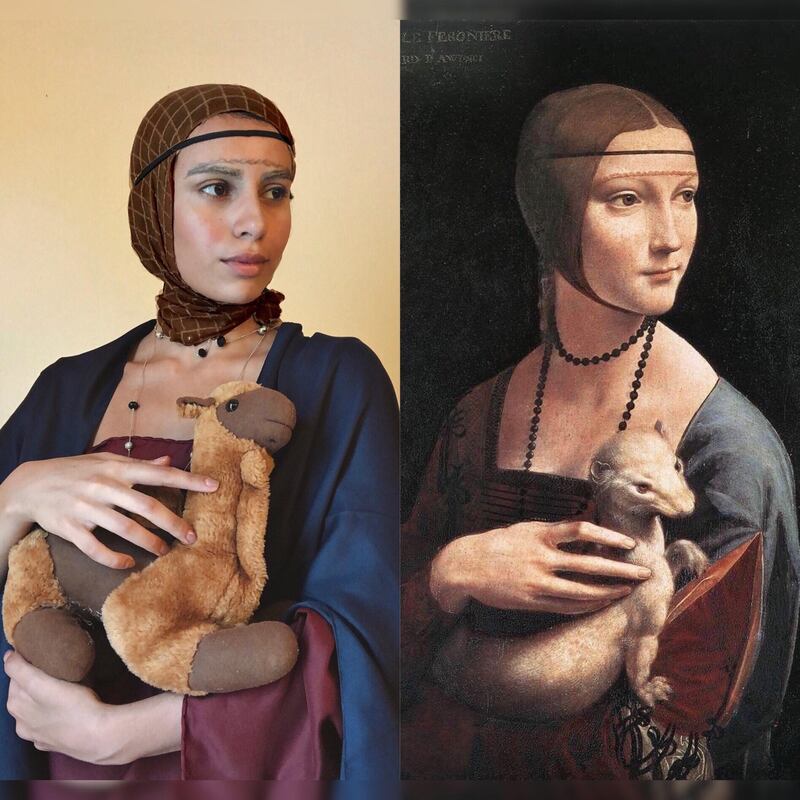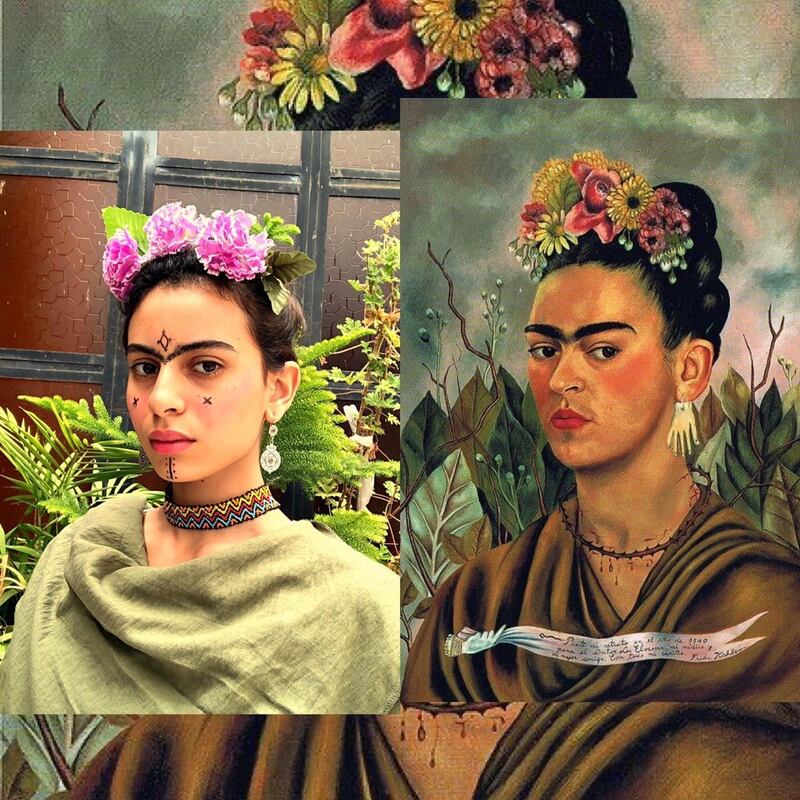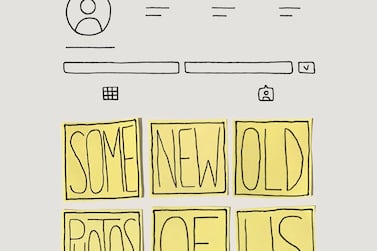“Here's how Mona Lisa fell in love with Moroccan tea,” is how Zineb Bouchra captioned a picture of herself on Instagram.
She is posing just like Leonardo da Vinci’s famed subject, her arms draped across her body, and she has a sheer black veil on her head. But while the Italian painter’s work has come to be an archetype of the Renaissance movement from the West, Bouchra’s version is decidedly modern and Moroccan.
Leonardo worked with canvas and oil paint, but the 18-year-old art student from Agadir created her version with a smartphone and used herself as the subject, transforming her image with a few props. There’s the silver Hamsa tied around her head, colourful traditional jewellery and, of course, a glass of Moroccan tea.
“The intention is to use Moroccan culture and show it to the world, and to speak to the Moroccan public in an artistic way,” she says.
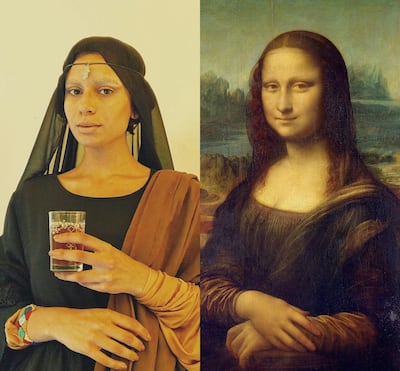
Bouchra has recreated other classical paintings, including Caravaggio's late 16th century painting Boy Bitten by a Lizard and Charles Zacharie Landelle's 19th century Woman with Oranges, often infusing elements from her own culture, both Moroccan and Amazigh, into the photos.
Meaning “free people”, Amazigh refers to descendants of the communities who have lived in the Maghreb region since at least 10,000 BC. The Amazigh are at times referred to as Berber, though this is now considered to have colonial undertones: the Romans first used the term when they referred to the non-Latin population as barbarians.
The Amazigh live in countries such as Morocco, Algeria, Tunisia, Libya and Egypt.
Bouchra’s recreations, which she says are inspired by online trends such as the Getty Museum Challenge and accounts including Covid Classics, have gained attention over time.
She started in April, posing as the woman from Harold H Piffard's Orientalist painting Odalisque, which shows a servant in a vivid red dress carrying a tray. "I saw it and said, 'This dress is very familiar!' I asked my grandma and she said that she had the same one," Bouchra says.
Since then, she has kept posting and has gained more than 10,000 followers on her Instagram page.
Initially focused on Orientalist painters, she reimagined the works of John William Godward and William-Adolphe Bouguereau, including the latter's L'orientale a la Grenade (1875), which shows a North African woman with red gem earrings peeling a pomegranate.
In another post, she copies the pensive subject in Jean Francois Portaels's Tanger Woman, sitting with her face in her hands.
She eventually took on Renaissance, Dutch Golden Age and modern paintings, too. In her recreation of Johannes Vermeer's Girl With a Pearl Earring from circa 1665, the artist matches the original subject's blue head wrap and over-the-shoulder angle, but on her face are the traditional tattoos of the Amazigh people.
Tattooing is an ancient practice in Amazigh society, which uses symbols such as dots, straight lines, curves, crosses and geometrical shapes to signify stories of cultural significance, including family ties.
“Every drawing has its own meaning,” Bouchra says. The practice has faded over time, in part due to the arrival of Islam in North Africa, and the French occupation in the 20th century.
Bouchra shows off the traditional face tattoos again in her recreation of a self-portrait by Frida Kahlo. Wearing a garland, she copies Kahlo’s stare, though instead of a crown of thorns around her neck, she wears traditional beaded jewellery and face markings.
In other photos, Bouchra has modelled herself on figures from the silver screen, including Audrey Hepburn and Ava Gardner, and even the Disney character Kuzco from The Emperor's New Groove.
She says she doesn’t always plan who or what to recreate. What matters is that she has the materials for it. “I try to only use items I have at home. The concept is to stay at home and have fun during these hard times of Covid-19.”
Bouchra was born and raised in Agadir, and is currently studying art at the Institute of Fine Arts of Tetouan. She uses a variety of mediums, from painting and drawing to photography and digital creations.
“Since I was a kid, I loved drawing and painting, so I studied arts with the support of my parents,” she says. The Moroccan artists she appreciates, she says, are Ahmed Cherkaoui, Leila Alaoui and Hassan Hajjaj.
In her recreations, Bouchra hopes to give people a dose of art history, along with insights into her culture. “I think most people don’t know enough art history. Same thing for me, I’m still learning," she says. "Everything I discover about my culture, I try to show by reviving the paintings in a creative and educational way.”
